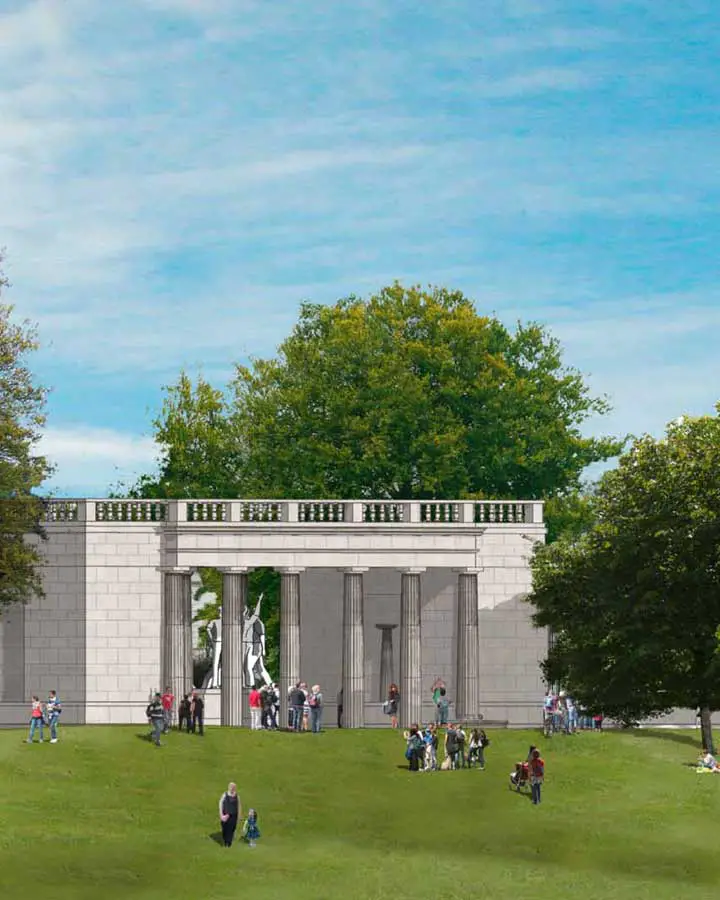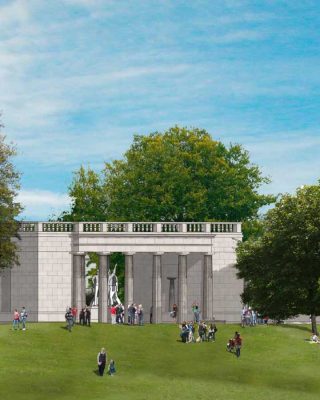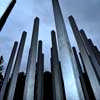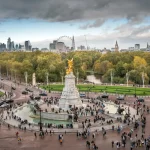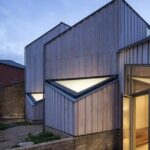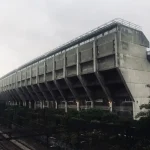Bomber Command Memorial London, Green Park Architecture Images, Westminster City Council Proposal
Bomber Command Memorial London
World War II Monument Design, Green Park Piccadilly entry, England, UK
14 May 2010
Bomber Command Memorial in London
Bomber Command Memorial Given The Go Ahead
Westminster City Council looks set to honour tens of thousands of heroes with a new memorial in central London.
Tonight (Thursday 13 May) the council’s planning applications sub committee gave the go ahead for a £3.5m monument to be built at the Piccadilly entrance to Green Park in recognition of the outstanding contribution made by Bomber Command in World War II.
The memorial created by Liam O’Connor Architects and Planning Consultants in the Grade II listed park will mark the nation’s gratitude to the 55, 573 aircrew who lost their lives in World War II.
Cllr Alastair Moss, chairman of Westminster City Council’s planning applications sub committee, said: “This new landmark for London is a fitting tribute to the heroes of Bomber Command who made the ultimate sacrifice for our freedom.
“It is a sign of this country’s gratitude to these exceptional people who were brave enough to fight for us and it will stand as an iconic London monument marking how good came to triumph over evil for many generations to come.”
The proposal is promoted by the Bomber Command Association with assistance from the Royal Air Force and the Heritage Foundation.
During the war the aircrews of the bomber squadrons ensured that the air war, with all its destructive violence, was largely kept away from its squares and streets and parks.
The memorial is designed as an open pavilion in a classical style based on the Greek Doric Order in keeping with nearby classical designs, particularly that of the Decimus Burton Screen which stands in front of Hyde Park.
Its roof will be open to the sky recalling where the men remembered flew their planes, and as a poignant reminder of the people who lost their lives the roof of the loggia will be made from melted down aluminium sections of a Halifax bomber shot down during the war and in which all the crew were killed.
The Halifax LW682 from No. 426 squadron was shot down over Belgium on the night of 12 May 1944, in which eight crew were killed. Three of the crew who have all posthumously been given full military honours, mid upper-gunner John Summerhayes, tail gunner Fred Roach and pilot Wilbur Bentz, were still at their stations when the aircraft was excavated in 1997.
No larger image:
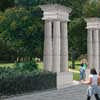
It will house a sculpture of seven aircrew by the sculptor Philip Jackson.
The pavilion will be made out of Portland stone and at 8.5m high its scale is appropriate to the generous park setting and width of Piccadilly.
Twenty five new trees will be planted in the surrounding area as part of the memorial, though nine trees will be removed.
The memorial will contain inscriptions, carvings, and a dedication, while to its south a bronze wreath will be set in the park on a simple stone block and there will be areas of lawn to either side of the loggia with flowerbeds and seats.
Within the memorial there will be inscriptions to record quotations from Winston Churchill who said in a speech to Parliament in 1940:”The gratitude of every home in our island….and indeed throughout the world except in the abodes of the guilty goes out to the British airmen who undaunted by odds, unweakened by their constant challenge and mortal danger, are turning the tide of world war by their prowess and their devotion.”
There will also be an inscription which describes the purpose of the memorial as well as historical and visual records of the air campaign during the war for educational purposes.
Inside the memorial will be carved depictions of the principal aircraft of Bomber Command together with depictions of the Hurricane and Spitfire aeroplanes.
Cllr Alastair Moss, added: “This monument has been designed to be in keeping with the near by classical architecture and its timeless quality should ensure that it soon becomes as synonymous with London as icons such as Marble Arch and Nelson’s Column.
“It is fitting for Green Park as it will enhance the park, not detract from its appearance, and its size suits its location in Piccadilly.
“Its elegant and bold design should save the area from being lost amongst the bustle of the city.”
Bomber Command Memorial images / information from Westminster City Council
Location: Piccadilly, Green Park, London, England, UK
London Buildings
Contemporary London Architecture
London Architecture Designs – chronological list
London Architecture Walking Tours by e-architect
Memorial Designs in UK Capital City
Another London Park Memorial:
7 July Permanent Memorial Design
Prince Charles unveiled the 0707 Memorial – designed by Carmody Groarke with Anthony Gormley. The monument includes 52 stainless steel stelae to commemorate the 52 victims, arranged in four groups to symbolise the four separate attacks in London.
Exclusive photos Nick Weall, 11 Jul 2009
Permanent memorial to the 52 victims of the July 7, 2005 suicide bombings in London
The final design for the permanent Memorial to the 52 innocent victims killed in the London bombings on 7 July 2005 was unveiled today.
Visualisation of Memorial: View from Curzon Gate looking North
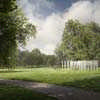
image © Carmody Groarke, credit: Imaging Atelier
The design comprises 52 pillars (stelae), each representing one of the victims. They are grouped together in four inter-linking clusters reflecting the four incidents, with each stele bearing an inscription of the date and location of the particular incident that its cluster represents. It will be situated in the North-east corner of Hyde Park, close to Park Lane and Lover’s Walk.
A plaque, listing the names of the murdered victims, will be sited in the grass bank at the far eastern end of the Memorial.
The Memorial has been created by a Design Team which has worked in close consultation with representatives of the bereaved families and advisors from The Royal Parks.
Visualisation of Memorial: View from Lovers Walk looking Southeast
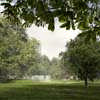
image © Carmody Groarke, credit: Imaging Atelier
A representative of the bereaved families group said:
“This Memorial is a fitting tribute, honouring the 52 lives lost on 7 July 2005, ensuring that the world will never forget them. It represents the enormity of our loss, both on a personal and public level. We hope this Memorial will speak to visitors, so they can understand the impact of these horrific events.
Visualisation of Memorial: View from East end of Memorial looking West
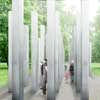
image © Carmody Groarke, credit: Carmody Groarke
7th July Memorial Hyde Park London images / information from Carmody Groarke 2008
Comments / photos for the London Bomber Command Memorial page welcome

